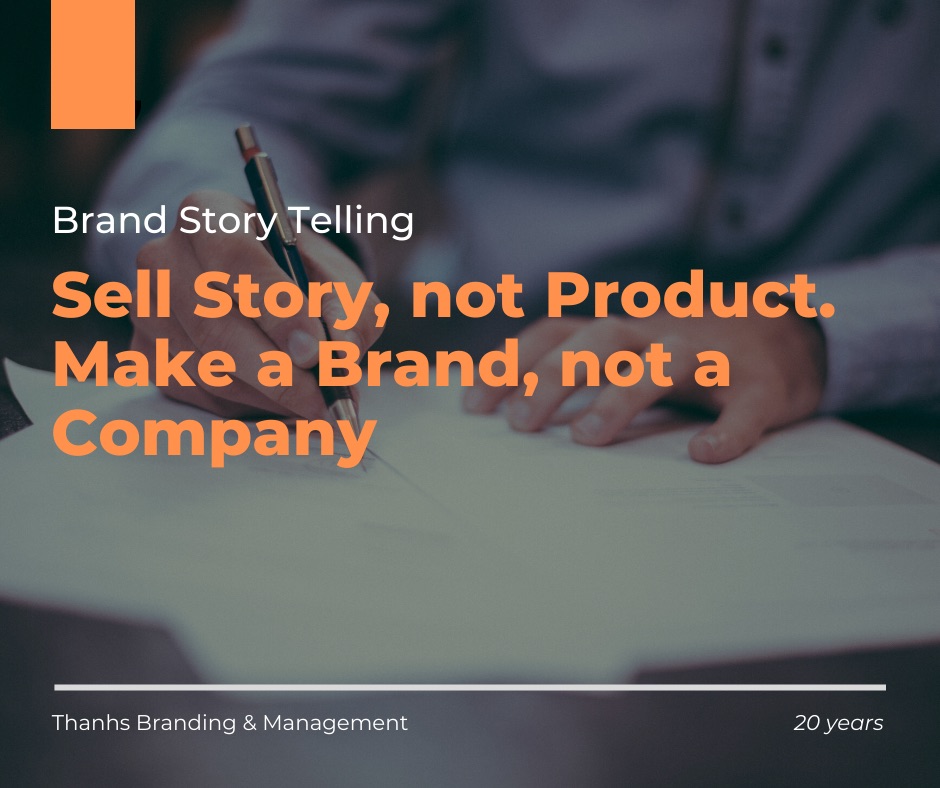Unleashing the Power of Brand Storytelling: A Guide for Aspiring Social Media Content Strategists
In the world of social media, content strategists and/or creators hold a unique power – the power to captivate, inspire, and engage. As you embark on your journey to create impactful content, there's a tool you should definitely have in your arsenal: brand storytelling. This potent technique isn't just for marketing professionals; it's for you, the storytellers of the digital age. In this guide, we'll walk you through the art of brand storytelling and how you can seamlessly weave it into your social media content, all while staying true to your authentic voice.
Understanding Your Role in the Story
First, let's clarify your role. Social media content
creators are the modern-day storytellers, shaping narratives that resonate with
audiences. Your followers don't just seek entertainment; they crave connection.
This is where brand storytelling steps in. By infusing your content with brand
narratives, you create a bridge between consumers and the brands they love.
Why Does Brand Storytelling Matter?
In the vast sea of content that floods our social media
feeds, brand storytelling emerges as the lighthouse that guides us to
meaningful experiences. Imagine scrolling through your favorite platform and
stumbling upon a story – a story that speaks to your aspirations, your values,
and your emotions. That's the magic of brand storytelling.
Creating Genuine Connections
Human beings are hardwired to connect through stories. From
ancient myths to bedtime tales, stories have been our companions through time.
When a brand tells its story, it invites you to be a part of something larger.
Suddenly, it's not just a product on the shelf; it's an entity with a purpose,
a journey, and a heart. As a content creator, you're the conduit for this
connection. Through your content, you bridge the gap between brands and their
audiences, making them feel seen and understood.
Resonating on an Emotional Level
Facts and figures can inform, but stories have the power to
transform. When a brand story evokes emotions – be it nostalgia, empathy, or
excitement – it lingers in the minds of the audience. Your role as a content
creator is to infuse that emotional essence into your posts. A heartfelt story
has the potential to resonate deeply, creating a lasting memory that ties the
brand to a personal experience.
Case Example 1: Airbnb's 'Belong Anywhere' Campaign
Guiding Audiences to Shared Values
In a world where consumers seek brands that mirror their
values, storytelling becomes a bridge of alignment. Think about it – when you
align with a brand's values, it's not just a transaction; it's a conscious
choice. By weaving brand values into your content, you're presenting a
narrative that speaks to the audience's beliefs. You're inviting them to join a
community that stands for something bigger, turning passive consumers into
engaged advocates.
Transcending Boundaries
The beauty of brand storytelling on social media is its
ability to transcend borders and cultures. A well-crafted story can resonate
with audiences across the globe, breaking language barriers and cultural
differences. As a content creator, you're in a unique position to weave narratives
that touch hearts internationally, creating a ripple effect of brand loyalty.
Aligning Companies with Customers
Companies, like people, have stories. These stories
encapsulate their history, vision, and purpose. Brand storytelling acts as the
bridge that connects companies with their customers in a meaningful way. As a
content creator, you help bridge that gap by translating a company's story into
relatable, digestible content that speaks directly to the audience. This
alignment fosters trust, loyalty, and a sense of authenticity.
Case Example 2: Dove's 'Real Beauty' Campaign
Dove's 'Real Beauty' campaign is a shining example of brand storytelling that goes beyond products to tap into societal values. Dove's content focuses on promoting self-confidence and embracing individual beauty. Their social media content often features real people sharing their personal stories and struggles with self-image. Their stories of self-discovery and empowerment resonate deeply with audiences who may have faced similar challenges.
Dove's campaign invites people to share their authentic stories about self-acceptance. This encourages an inclusive and relatable narrative that resonates with individuals facing similar challenges. Content creators can similarly foster authenticity by inviting their audience to share personal stories and experiences.
Crafting Your Brand Story
Characters
Every great story has characters that the audience can
connect with. In the context of brand storytelling, characters could be the
founders, employees, or even customers. Introduce these characters through your
content, giving them personalities, motivations, and relatable traits. Make
them the heroes of your story, driving the narrative forward.
Challenge/Conflict
No story is complete without a challenge to overcome.
Identify the obstacles or pain points that your brand aims to address. This
could be a common problem faced by your target audience or a societal issue
that your brand stands against. The challenge serves as the driving force of
your narrative, creating suspense and emotional investment.
Resolution
The resolution is where your brand swoops in to save the
day. It's the moment of transformation, where your brand's products, services,
or values offer a solution to the challenge. The resolution showcases the
positive impact your brand can have on people's lives. It's where your
characters grow and evolve, and your audience finds hope and inspiration.
Example: Nike's Brand Story
Challenge: The challenge in Nike's story is the struggle to
overcome obstacles, whether it's personal limitations, societal expectations,
or self-doubt. The challenge resonates with anyone who has faced adversity on
their journey.
Resolution: Nike's iconic tagline, "Just Do It,"
represents the resolution. It's the moment of empowerment and transformation.
Nike's products and messages inspire people to push past their limits, believe
in themselves, and achieve their goals.
Incorporating the mini adventure approach into your brand storytelling adds a layer of narrative depth that captures your audience's attention. By introducing relatable characters, addressing challenges, and offering resolutions, you create a story that resonates emotionally and leaves a lasting impact.
For instance, imagine you're a content strategist
collaborating with a sustainable fashion brand. You could introduce the brand's
founder as a character who embarked on a mission to combat the environmental
impact of the fashion industry (Character). The challenge could be the alarming
rate of textile waste and unsustainable practices (Challenge). The resolution
comes when the brand offers ethically produced, eco-friendly fashion choices,
empowering consumers to make a positive impact through their choices
(Resolution).
By structuring your brand story as a mini adventure, you
guide your audience through a captivating narrative that sparks emotions,
fosters connection, and leaves a lasting imprint.
Platform Play: Tailoring Stories for Impact
In the expansive world of social media, each platform is a
unique stage, and your brand story is the script. Just as actors adapt their
performances to different audiences, content creators must tailor their brand
stories to suit the strengths and nuances of each platform. This strategic
approach enhances the impact of your storytelling and ensures that your message
resonates with the intended audience.
Instagram: Visual Storytelling
Instagram is a visual playground, making it ideal for
showcasing the aesthetic and visual aspects of your brand story. Leverage
Instagram's photo and video features to create a visually compelling narrative.
Share high-quality images that evoke emotions and align with your brand's
identity. Whether it's a behind-the-scenes glimpse into your brand's creative
process or a beautifully curated series of images, let the visuals tell the
story.
Facebook: Depth and Engagement
Facebook offers more room for longer-form content, making it
suitable for sharing in-depth narratives. Craft posts that delve into the
various elements of your brand story, allowing your audience to connect with
the journey on a deeper level. Share personal anecdotes, customer testimonials,
and behind-the-scenes stories that give your audience a glimpse into the heart
of your brand. Encourage engagement by asking questions and inviting your
audience to share their perspectives.
YouTube: Visual and Narrative Richness
YouTube provides a platform for immersive storytelling
through video. Create engaging video content that takes your audience on a
journey. Whether it's a vlog-style exploration of your brand's values or a
documentary-style narrative about the challenges your brand seeks to overcome,
video allows you to combine visuals, audio, and narrative in a captivating way.
Incorporate compelling visuals, interviews, and even animations to enhance the
storytelling experience.
LinkedIn: Professional and Educational
For B2B brands or those with a professional focus, LinkedIn
is your avenue for brand storytelling. Craft content that highlights your
brand's expertise, industry insights, and thought leadership. Share success
stories, case studies, and lessons learned. Use a professional tone and engage
in conversations that showcase your brand's contributions to the industry.
Example: Starbucks and Platform-Specific Stories
Consider Starbucks as an example of tailoring stories for impact across platforms. On Instagram, they showcase beautifully shot images of their coffee creations, engaging viewers' senses. On Twitter, they craft witty and concise posts that spark conversations around their products. On Facebook, they share heartwarming stories about their employees and initiatives, inviting audiences to connect emotionally.
On YouTube, they create visually appealing videos that delve into the journey of their coffee beans from farm to cup. Starbucks' adaptability across platforms ensures that their brand story is told effectively to diverse audiences.
Tailoring your brand story to each platform's strengths
allows you to maximize the impact of your storytelling efforts. By recognizing
the unique attributes of each platform, you create a harmonious symphony of
narratives that resonate with audiences across social media landscapes.
Remember, it's not about telling the same story everywhere, but about crafting
a story that speaks the language of each platform's audience.
From Fans to Collaborators: User-Generated Content
In the realm of brand storytelling, there's a treasure trove of narratives waiting to be tapped into – the stories of your audience. User-generated content (UGC) is a powerful tool that transforms passive admirers into active collaborators. It's a testament to the fact that your brand's story is not just yours; it's shared by those who believe in it. The journey from fans to collaborators begins with inviting your audience to be co-creators of your brand's narrative.
Importance of User-Generated Content
User-generated content is more than just a buzzword; it's a
game-changer in brand storytelling. It's authentic, relatable, and fosters a
sense of community. When your audience shares their own stories and experiences
related to your brand, it resonates deeply with others who may have similar
experiences. UGC acts as a bridge that connects individuals through shared
values and experiences, amplifying your brand's impact.
Engaging and Inviting Users to Share
Create a Dedicated Hashtag: Craft a unique and memorable
hashtag that encapsulates your brand's story. Encourage your audience to use
this hashtag when sharing their own content related to your brand. This creates
a digital thread that weaves together diverse stories.
Host Contests and Challenges: Organize contests or
challenges that encourage users to share their stories creatively. For example,
you could invite users to share photos of how they incorporate your products
into their daily lives or ask them to share personal anecdotes related to your
brand.
Feature User Stories: Regularly feature user-generated
content on your social media platforms. Share photos, testimonials, or posts
from your audience, highlighting their experiences. This not only showcases
appreciation but also motivates others to share their stories.
Encourage Reviews and Testimonials: Invite your customers to
share their experiences through reviews and testimonials. Showcase these
reviews on your website or social media. A positive testimonial is a powerful
brand story in itself.
Share Behind-the-Scenes: Offer glimpses behind the scenes of
your brand. Show the process of creating products, share stories of your team
members, or offer insights into your brand's journey. This authenticity
encourages users to share their own behind-the-scenes moments.
Engage in Conversations: Initiate conversations around your
brand story and values. Pose questions that prompt users to share their
perspectives or experiences related to those values.
Example: Coca-Cola's 'Share a Coke' Campaign
Coca-Cola's 'Share a Coke' campaign is a prime example of successful user-generated content. The campaign invited people to find Coke bottles with their names on them and share photos using the hashtag #ShareACoke. This simple act of personalization turned consumers into brand advocates. People shared photos of their unique bottles, often including stories of how they found them or who they shared them with. The campaign showcased user stories prominently on Coca-Cola's social media platforms, creating a sense of community around the brand.
The power of user-generated content lies not only in its authenticity but in its ability to weave together a tapestry of diverse experiences, all centered around a shared brand narrative. By inviting our audience to be co-creators of our story, we're fostering a dynamic community where stories are exchanged, connections are forged, and the brand narrative resonates far beyond the marketing realm. As we journey forward, remember that the most compelling brand stories are the ones that are told not just by us, but by the people who have embraced our brand as their own.
User-generated content is not just about content creation; it's about cultivating connections, building trust, and creating a collaborative storytelling ecosystem which has to be part of your content strategy.
Conclusion
From the inception of brand storytelling as a strategic
imperative to the intricacies of crafting narratives that resonate, we've
uncovered the layers that make stories pulsate with life. The principles of
empathetic character-building, the challenges that lend momentum, and the
resolutions that inspire – all these elements create a symphony that
captivates, educates, and connects.
As content creators, we are more than conveyors of messages;
we are architects of experiences. From the very first word to the final
hashtag, we curate stories that tug at heartstrings, spark conversations, and
inspire action. In the digital symphony, we're the conductors, orchestrating
narratives that leave indelible imprints in the minds of our audience.
So, as we sign off on this voyage through the realms of
brand storytelling, let's remember that with every post, every image, and every
word, we have the power to shape perceptions, spark connections, and nurture
communities. Let's craft stories that matter – stories that transcend the
virtual, becoming whispered conversations in coffee shops, shared laughter in
living rooms, and the heartbeat of brands that leave a mark on the world.








/Imported_Blog_Media/building-a-brand-story-1.jpg)


















Comments
Post a Comment